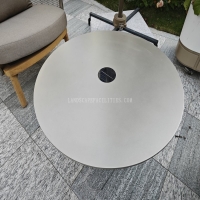Welcome to the website for landscape facilities products and knowledge.
What are the key factors influencing the table’s resistance to chipping or cracking?
The durability of a table against chipping and cracking depends on several crucial factors that determine its long-term structural integrity and appearance. Material selection stands as the primary consideration, with hardwoods like oak and maple offering superior resistance compared to softwoods or engineered materials. The manufacturing process equally impacts durability, where proper drying techniques, precision joining methods, and quality control during production significantly reduce internal stresses that lead to future damage.
Protective finishes serve as the first line of defense against surface damage. High-quality polyurethane, epoxy resins, or catalyzed lacquers create robust barriers against impact and moisture penetration. The thickness and number of coating layers directly influence protection levels, with multiple thin coats typically outperforming single thick applications. Additionally, UV-resistant finishes prevent molecular breakdown from sunlight exposure, maintaining surface integrity over time.
Construction methodology profoundly affects a table's vulnerability to damage. Traditional joinery techniques like mortise-and-tenon or dovetail joints distribute stress more effectively than simple butt joints or staples. The orientation and quality of wood grain matching during assembly can either minimize or exacerbate natural wood movement, which is a common cause of cracking. Reinforcement elements such as corner blocks, center supports, and proper fastening systems contribute significantly to overall stability.
Environmental factors play a substantial role in table durability. Consistent humidity levels between 40-50% prevent wood from expanding or contracting excessively, while stable temperatures avoid finish brittleness. Proper usage patterns and regular maintenance, including immediate spill cleanup and appropriate cleaning products, preserve both the surface finish and underlying material. The table's design elements, including edge profiles, corner treatments, and leg placement, also influence impact resistance and stress distribution.
Ultimately, a table's resistance to chipping and cracking represents a combination of material science, craftsmanship, and ongoing care. Understanding these interconnected factors enables consumers to make informed decisions and implement proper maintenance routines that extend furniture lifespan while preserving aesthetic appeal.
Related search:

Recommendation
Outdoor stainless steel table with solar-powered ambient lighting feature - excellent design.